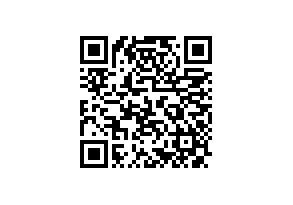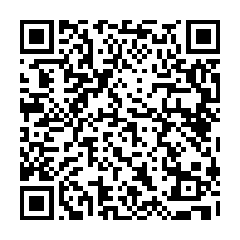Thousands of Alawites took to the streets on the Syrian coast, the heartland of the community, on November 25 to protest against discrimination and violence, in the first such move since a deadly crackdown by the country’s Islamist-led Interim Government eight months earlier.
The government crackdown in March came in response to an armed uprising by members of the community, which former President Bashar al-Assad belongs to. It ended with a series of massacres that claimed the lives of more than 1,400 Alawite civilians.
Killings and forced disappearances have continued since then, albeit at a lower pace, against Alawites on the coast, as well as in Homs and other areas in central and western Syria.
A wave of violence targeted the community in Homs after a Sunni Muslim Bedouin couple were killed just two days earlier, with sectarian graffiti found at the site. Health officials in the central governorate announced that 18 people were wounded by the violence, but Alawite activists said that two members of the community were killed. Later, authorities said that the murder of the Bedouin couple was not sectarian in nature.
The protests came in response to the violence in Homs, upon a call from the Supreme Islamic Alawite Council in Syria and Abroad.
While the largest of the protests were in Tartus and Latakia on the coast, many gatherings were also reported in Alawite-majority areas in Homs and Hama. Many of the protesters held banners demanding “federalism” and “the liberation of prisoners,” as well as for the end of sectarian violence.
In Tartus, frictions with security forces were reported, and dozens of supporters of the government gathered in another part of the city.
The situation in Latakia was even more tense. Protestors fought with government supporters in the city itself, as well as in Jableh to the south in the governorate. Videos from the governorate show casualties, gunfire and vehicles attempting to run over the protestors.
RT reported citing local sources that five people were killed in Latakia, three in al-Zera’a Street and two others at Al-Azhari roundabout.
The Alawite council, which is headed by Sheikh Ghazal Ghazal, later announced the end of the protests, saying in a statement that what happened was “the first spark of a phase in which neither humiliation nor marginalization will be tolerated.”
Following the end of the protests, Tartus and Latakia both saw mass deployment of security forces. Even military units armed with armored vehicles and anti-aircraft guns were spotted moving inside both cities.
In a statement to the state-run al-Ikhbariya TV, interior ministry spokesman Noureddine al-Baba warned people on the coast against falling for “schemes” aimed at sowing discord, and cautioned against sectarian slogans. This was the only official reaction to the protests.
Since the fall of the Assad regime close to a year ago, Alawites have been largely excluded from the government structure on both the lower and higher levels, with no representation for the community whatsoever in the military and security forces.
The exclusion of the Alawites, and the massacres that followed pushed both the Kurds, represented by the Syrian Democratic Forces (SDF), in northeastern Syria, and the Druze in al-Suwayda in the south to take a very cautious stance from the government.
These fears were magnified by the battle of the al-Suwayda in July, which saw the government attempting to take over the governorate by force only to be confronted by an Israeli intervention. Over 3,000 people were killed in the span of a few days, with Druze civilians making a large chunk of the number. Since then, al-Suwayda remains out of government control, and clashes with the SDF in Aleppo and Raqqa have become more frequent.
The government is not engaged in any serious talks with the Alawites, and the situation with the Druze is not that different.
Talks are, however, ongoing with the SDF, likely due to pressure from the United States which is the main backer of the group.
SDF commander-in-chief Mazloum Abdi has recently called for the inclusion of Druze and Alawite representatives in upcoming meetings with the government. This could, of course, provide a way out for the country from the ongoing tensions. The government will not likely agree, however.
The protests on the coast, which the government thought it subdued once and for all with the March crackdown, is a sign that Syria is sliding into a new war.
If the government continues to exclude the minorities, regional and international powers could take advantage of this to further their interests in the country. This is already the case with the U.S.-backed Kurds and the Druze who are de-facto protected by Israel. Still, the influence of radical Islamists within the government seems too strong to allow for any power sharing whatsoever. Even the talks with the SDF will likely collapse by the end of the year.
_______________________________________________________________________________________________________________________
SouthFront: Analysis and Intelligence
NOW hosted at southfront.press
Previously, SouthFront: Analysis and Intelligence was at southfront.org.
The .org domain name had been blocked by the US (NATO) (https://southfront.press/southfront-org-blocked-by-u-s-controlled-global-internet-supervisor/) globally, outlawed and without any explanation
Back before that, from 2013 to 2015, SouthFront: Analysis and Intelligence was at southfront.com







it is no surprise that syrians any including alawites seek release from the barbarians that forced unwanted rule upon their nation. barbarians only take plunder. americans and other nations populations are just beginning to see the price they for these conflicts they are forced for subside.
americans once rallied behind words like ” liberty or death” to free themselves from the bank of england. the nation has submitted to the central banker barbarians. usury destroys freedom
culpa do putin que trocou a síria pela ucrânia.